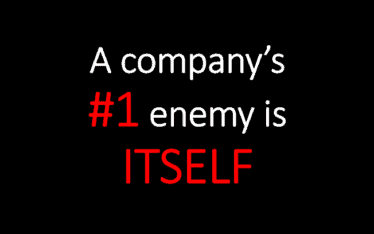Gap between success and failure – Closing the change management gap
A study carried out by IBM on “Making Change Work” included the results of a survey from 1,500 Change Practitioners worldwide, the results were staggering.
The change practitioners themselves reported the following change program success rates:
- 41% – Fully met objectives
- 44% – Missed at least one objective
- 15% – Missed all objectives or aborted
In all, 59% of change initiatives failed to meet their objectives.
The question at the forefront of businesses today when faced with facts and figures such as those is how do we avoid change management failure? What are some of the common challenges? Why is there this “change gap” between success and failure?
The new normal is continuous change
In today’s dynamic work environment there are multiple enablers and accelerators of change, whether it is technology advances, complex multi-national organizations, the impact of globalization or a challenging economic situation, businesses are required to re-frame their view of “normal”.
Leaders are confronted with an increasing rate of change and complexity and need to find ways to deal with it. Leading companies through change has become different from how it was ten to twenty years ago. And it is not going to slow down – on the contrary!
Bridging the gap between success and failure
For businesses to prosper, thrive and lead they will need to breakaway from expecting the day-to-day operations to continuously fall into a static and predictable pattern that may include short periods of change. The new normal is continuous change, not the absence of change. Businesses that embrace this “new norm” will move from merely responding to trends, to shaping them and leading them.
There is no single answer to delivering successful change management
There is no single answer to delivering successful change, but there are clear steps that businesses can take to reduce and eventually eradicate the change gap between the failures and the successes. Businesses can no longer afford an ad-hoc approach to change management.
There is now a turning point in change management, where it needs to move from an ad-hoc, sporadic and reactive approach to a systematic approach based on intelligence and insight into what works and what does not, the application of better skills and a culture that embraces change as the new norm.
Short URL & title:
Mind the gap – Closing the change management gap — https://www.torbenrick.eu/t/r/pay
Share it:
If you enjoyed this article, please take 5 seconds to share it on your social network. Thanks!









I agree that we need to do more than ad hoc approaches. I mostly support “How do we manage the journey?” I think the biggest value in a change initiative is from how we engage the stakeholders along the way. In essence, the journey is the destination.
In a world of rapid change, it strikes me that having employees that understand the economics of the business, so they can make decisions more autonomously.
Good post Rick,
Change is dynamic a field. People behaviours, working culture, priorities everything is changing at a much greater pace.
I don’t think there is any silver bullet solution or so called ‘best practice’.
Change Managers have to learn multiple deciplines look business problem for various angles, take quick but informed decisions, take measured risks, ….. Still fail and learn another lesson to be better next time.
SP Singh
I agree with you Torben. Putting the people elements at the forefront of planning, preparing and implementing a change initiative, and managing these well will significantly increase the likelihood of achieving the objectives. Managing all aspects of the change management process is key to increasing success.
Great questions. Thanks for sharing.
Thanks Lynda